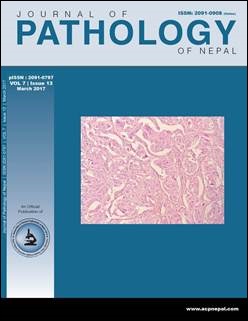Role of Sepsis Screening in early diagnosis of Neonatal Sepsis
DOI:
https://doi.org/10.3126/jpn.v7i1.16944Keywords:
Blood culture, CRP, I/T ratio, Neonatal sepsis, Sepsis screeningAbstract
Background: Neonatal sepsis, a clinical syndrome of bacteremia with systemic signs and symptoms of infection in the first 4 weeks of life is a major cause of morbidity and mortality in newborn inborn. Early diagnosis is critical, as sepsis can progress more rapidly in neonates than in adults. An attempt was made to establish correlation between early neonatal sepsis screening & blood culture in neonates presenting with features of sepsis. The aim of this study is to assess the usefulness of sepsis screen in early diagnosis of neonatal septicemia.
Materials and Methods: The study was done in Kist medical college and hospital, Nepal from October 2015 to October 2016. Statistical correlation between early indicators of sepsis screen & blood culture (considered as gold standard) was established in clinically suspicious cases of neonatal sepsis.
Results: Out of 150 cases studied, 72 were culture positive. CRP (77.8%) and immature: total neutrophils ratio (73%) showed highest sensitivity. CRP (66.7%), I/T ratio (61.5%) and micro ESR (60.2%) showed highest specificity. Positive predictive value was highest for CRP (68.2%) followed by I/T ratio (63.8%) and corrected total leukocyte count (56.2%)
Conclusion: Serum CRP is the most sensitive marker of sepsis. Use of peripheral smear study and CRP can be implicated effectively as a sepsis screen for early diagnosis of neonatal sepsis. The combination of parameters yielded better results than single tests and proved to be an invaluable tool for early diagnosis of neonatal sepsis.
Downloads
Downloads
Published
How to Cite
Issue
Section
License
This license enables reusers to distribute, remix, adapt, and build upon the material in any medium or format, so long as attribution is given to the creator. The license allows for commercial use.




